Text
How Cyrus the Great could know antiseptics?
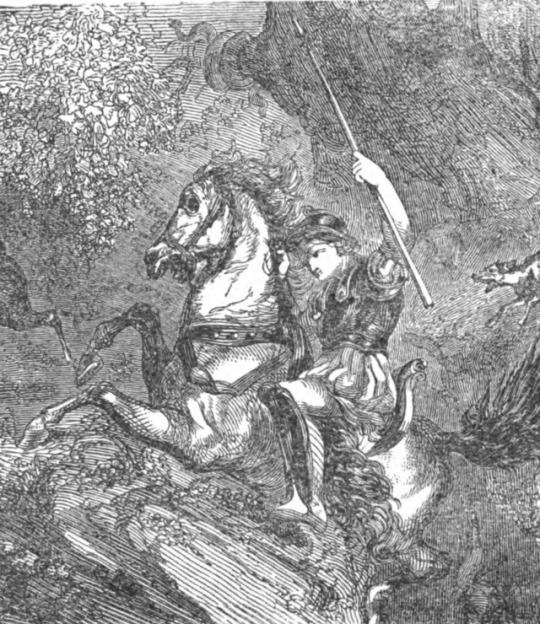
Herodotus in his "Histories" wrote about a peculiar fact that drew my attention. Cyrus II was using very interesting method for conservation of water.
Cyrus II, often called The Great was the ruler that made Persian Empire one of the biggest empires in the world. He conquered vast lands from Indus Valley to the Asia Minor and set up pretty very well prospering state back in 6 century BC.
Herodotus mentions that during his war times, Cyrus used to drink the water only from one river, which is called Choaspes. To have the fresh supply of this specific water, his army was being followed by wagons loaded with silver vessels with boiled water. Here is the quote:
The Great King, when he goes to the wars, is always supplied with provisions carefully prepared at home, and with cattle of his own. Water too from the river Choaspes, which flows by Susa, is taken with him for his drink, as that is the only water which the kings of Persia taste. Wherever he travels, he is attended by a number of four-wheeled cars drawn by mules, in which the Choaspes water, ready boiled for use, and stored in flagons of silver, is moved with him from place to place.
Herodotus, Histories, Book I
By coincidence boiled water is perfect for storing, because it does not contain (alive) bacteria. Of course bacteria will eventually reach the water, but the vessels are made of silver. Silver is exhibits high toxicity for microorganisms. The action responsible for this is the oligodynamic effect in which ions of silver (Ag+) interact with bacteria and fungi cell membranes and are harmful for their metabolism. This is why in your deodorant you may find silver ions.
It would be a bit risky to assume that knowledge about this phenomenon known in the Achaemenid Empire, yet it's pretty interesting to see how Herodotus' story matches our current scientific understanding. Maybe it's worth investigating if there are more examples of usage of boiled water and silver for preservation of water in ancient times, probably discovered through the classic trial and error method.
Reference:
http://classics.mit.edu/Herodotus/history.mb.txt - Herodotus, Histories,
https://www.karger.com/Article/Abstract/93928 - Antimicrobial effect of silver
3 notes
·
View notes
Text
The oldest bridge in the world?
Recently I came across some interesting information about the oldest bridge in use.
Guiness world records - Oldest Bridge
The bridge is said to be erected in year 850 BC and used by Homer himself *(Lay, Ways of the World: A History of the World’s Roads (…), 1992, p. 254). It was built in ancient Smyrna, nowadays Izmir.
Well, I’m really skeptic about this 850 BC date, because it’s extremely difficult to verify, but since me and my partner were planning a journey to Aegean coast in Turkey we decided to visit that place and take a look by ourselves.
After few hours of walking along the river Meles (which is completely regulated and fairly shallow now) and asking the locals about the bridge (who were really helpful and excited that we came here just after reading a post on Turkish blog), we finally found it.

Source: own photograph
The bridge itself wasn’t easy to find because it have been used as a base for a 6-lane road and right now it’s hidden between the new concrete bridge and channel walls. Thanks to a Kurdish land owner, we were able to make some photos.
What are the facts about Kervan Köprüsü?
This is a single arch bridge made out of tightly fitted stone blocks. The dimensions of the bridge are difficult to measure, because it’s only partially visible, although the height of the arch is approx. 5 meters with 10 meters span.
Every second stone in the arch is white, which gives decorative effect. There are also white stones on both sides of the bridge.
What did we learn from historic sources?
The bridge was built for helping camel caravans go across the river Meles and we have numerous photographs and figures depicting such scenes. Also, I have read about how the bridge was used in 1830’s from English traveler C. B. Elliott.
Leaving the city, we were stopped by the Turkish douanier at the Caravan bridge, where numerous caravans of camels daily halt previous to their entrance into the town. Though Smyrna be not a ville franche, the government prescribes that articles transported from the city into the interior shall be subject to examination, no less than those which enter it. The exhibition of our firman, however, prevented much trouble, and we pursued our journey without being even solicited for a present; a fact which redounds to the credit of Turkish custom-officers.
(…)
Here several strings of camels met us, on their way to the city. Each is fastened by a halter to the back of its predecessor, and the foremost is similarly attached to a donkey: one of these little ani mals is required to precede every ten or twelve camels, experience proving that they will not move without a leader, however humble its grade. They are heavily laden with a bag on each side, and travel readily for twelve hours a day, neither finding nor seeking repose.
C. B. Elliot, Travels in the Three Great Empires (…), p. 50
One of the earliest depictions I have found comes from Luigi Meyer, a 18th century painter.
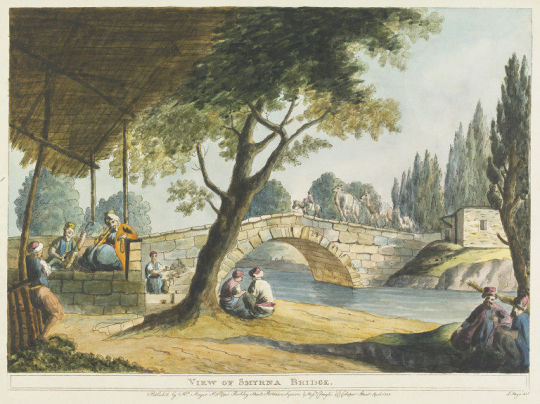
Source: http://collections.vam.ac.uk/item/O1106719/view-of-smyrna-bridge-etching-mayer-luigi/
Another one is a print from journals of Charles Fellows, a British archeologist and traveler, made probably in 1838.
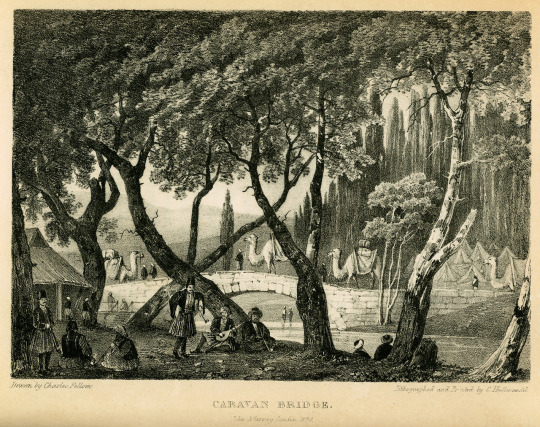
Source: FELLOWS, Charles. A journal written during an excursion in Asia Minor, London, John Murray, MDCCCXXXIX [=1839]. http://eng.travelogues.gr/item.php?view=43173

Source: ESTOURMEL, Joseph d’, Comte. Album du Journal d’un Voyage en Orient, Paris, Imprimeurs Unis, 1848. http://eng.travelogues.gr/item.php?view=39980

Source: BUSCH, Moritz, Dr. L'Orient Pittoresque, Publication Artistique dessinée d'après nature (…), Trieste, Lloyd Autrichien, 1865.

Source: http://www.erolsasmaz.com/?oku=550
Later in 19th century the bridge became a well known sightseeing monument and we have a lot of historic post cards like this one from 1899.

Source: http://izmir-hatirasi.blogspot.se/2011/11/

Source: http://www.erolsasmaz.com/?oku=550
Here on this 1919 photo we see that the north side of the bridge was renovated and took the shape that we can see now in 2017.

Finally, to conclude this post, a real gem; stereoscopic photograph of the bridge, dated probably to the turn of 19th/20th centuries.
Stereo photography of Smyrne bridge
Sources I used:
M. G. Lay, Ways of the World: A History of the World’s Roads and of the Vehicles That Used Them, 1992
C. B. Elliot, Travels in the Three Great Empires of Austria, Russia, and Turkey: A voyage in the Archipelago and along the southern coast of Asia Minor, with a visit to the Apocalyptic churches, and travels in Syria, Palestine, and the country east of Jordan, 1838
http://www.dunyabulteni.net/haber/226733/izmir-kervan-koprusu
http://www.erolsasmaz.com/?oku=550
http://wowturkey.com/forum/viewtopic.php?t=3234&start=280
http://eng.travelogues.gr/tag.php?view=14052
0 notes
Text
Balloon steered by magnet
We stay in topic of the balloons. In the first years of the ballooning, one of the serious problems was steering the aerostat, because, as it's commonly known, a balloon has neither propulsion, nor steering device. There were lots of different attempts to solve this problem, but most of them failed.

One idea came from a polish poet and royal chamberlain, Stanisław Trembecki (1739-1812), who came up with a brilliant idea to steer a balloon with a magnet. How did he visualize it? Now, in his project there was an iron plate attached to the surface of a balloon and a magnet at the end of an arm, sticking out of the basket. A proper magnet would pull a balloon in the desired direction. You can see it in his project:

Trembecki introduced his project to the king Stanisław August Poniatowski, who not only got interested in this idea, but also sent it to scientific academies in Berlin and Petersburg. Unsurprisingly, he didn't receive positive response.
The whole idea was of course ridiculous, because you can't expect to pull yourself with magnet attached to you. It would be something like pulling yourself up by your hair, but unfortunately only baron Münchausen can do this. The idea of Trembecki proves him poorly educated and shallow thinking, but unluckily the same applies to the king.
In the polish version of this article I would end at this point, but as you may not be familiar with polish Enlightenment, I've got to explain some things. First of all, the case of Trembecki may sound comical, but he was an example of a mind that tried to be progressive and serve his country with inventions, even if he didn't have any intellectual base. Such was the polish Enlightenment.
Fortunately, that period gave birth to authentic polish 'savants' that were respected among their European colleagues, not to mention Jan Śniadecki (1756-1830), who was one of the first to carry out experiments with real balloons. But I will tell more about him later.
Source:
I. Z. Siemion, O polskich osiemnastowiecznych próbach balonowych, „Wiadomości Chemiczne”, 2009, nr 63, s. 713.
3 notes
·
View notes
Text
Obscene balloons
Have you heard about first balloon flights in France? It was in 1780s, it's not enough to say that people enjoyed it. They loved balloons. They went mad about balloons. They printed so many paintings, drawings and figures with balloons, that you probably have seen at least one of them. But some of them were caricatures. Peculiar ones. As libertine as French Enlightenment itself.
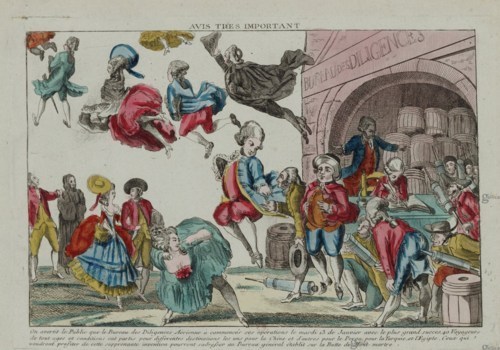

Source: Bibliothèque nationale de France

Source: Bibliothèque nationale de France
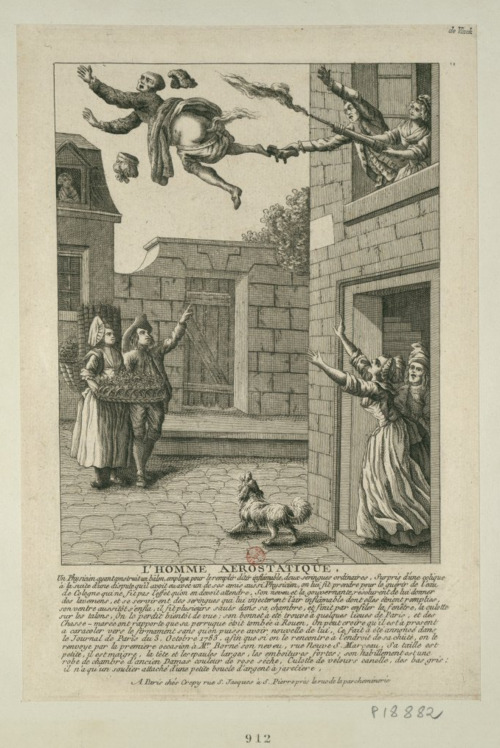
Source: Bibliothèque nationale de France
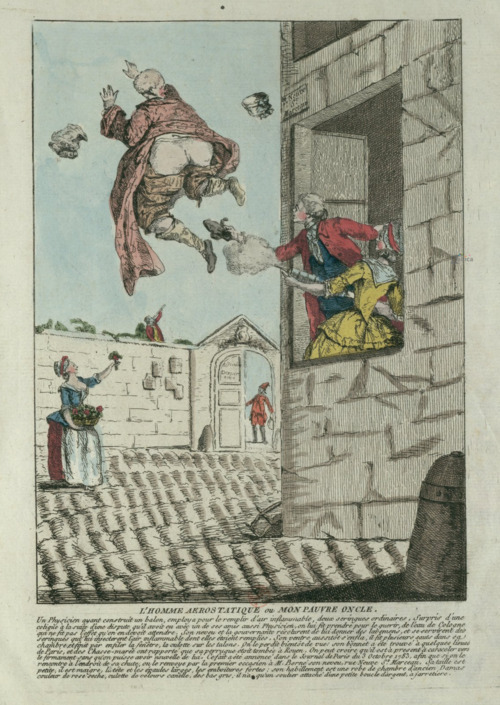
Source: Bibliothèque nationale de France
1 note
·
View note
Text
Sir Karl Popper on role-playing games

By accident I found very interesting letter from 50 years ago. What was it about? Role-playing games. What is more, it was written by sir Karl Popper, one of the most brilliant minds of philosophy and logic of 20th century. Letter is dated 20 July 1961 and was addressed to Thomas Szasz, Hungarian psychiatrist. In one point Popper apparently responds to a question, concerning role-playing games (unfortunately I don't have that letter of Szasz). It looks like that: (2) Role Playing and Game playing. I shall make only quite dogmatic remarks. Role playing is for those who do not dare to be what they are. It is itself already a shoddy and dangerous substitute for genuine learning, that is, for genuinely changing oneself to become more nearly what one wants to be. This learning new roles is not the kind of learning which is really desirable, and an end in itself. Learning a new role has only an instrumental value - for survival. But none of us survives long; and instrumental values are not enough. Learning - as opposed to learning a new role - and growing up, until we die, is, or can be, a value in itself. To perform constantly the miracle of lifting oneself out of the swamp by one’s own shoelaces is, indeed, a purpose. […] Now role playing is a bad philosophy of life, and so is the theory of learning by repetition (which is inapplicable in a changing environment anyway). (source) In brief: Popper states that role-playing (in actual RPGs, because back then there weren't computer RPGs, as well as computers themselves) are poor and potentially harmful alternative for traditional ways of learning. It's not surprising. In 60s there weren't good RPGs (the original Dungeons&Dragons game was released in 1974), the gamers were joined in few small groups, which reminded rather sects. Certainly, you'd attract less attention doing LSD than playing with imagined armor and sword.
0 notes
Photo

1720s-1730s
The V&A says: Pattens were worn to lift the shoe out of the dirt and damp. Being somewhat heavy and clumsy, they were mainly used by working-class or country women.
These pattens, however, have pointed toes to fit a fashionable woman’s shoe and a depression at the back where a small heel could sit. The shoe would have been fastened into the patten by means of ribbon-laced latchets. All this, and the fact that the latchets are covered in velvet, suggests that the patterns were worn by someone of considerable wealth.
123 notes
·
View notes
Photo

Ahh, so illuminating. Poster "Electricidad Tapies y Comprubí" by Joan Llaverias. 1899. Museum of the History of Catalonia in Barcelona.
0 notes
Text
Abbé Nollet and electrified cats
The 18th century physics made an impressive discovery, a completely new branch of science: the electricity. There were some suppositions about electrical phenomenons since Antiquity (mainly considering amber and natural magnets) but they were detached and insufficient to form a complete theory of electricity. Great researches of Stephen Gray, Benjamin Franklin, Charles François Dufay and many others, paved the way to new understanding of electricity, but there were many unknowns, like for example, the effects of electricity on human body. Was it at all safe? Or may be able to cure diseases?

Nollet, as other physicists, stated that this peculiar phenomenon was also taking place in organisms of living creatures. According to the contemporary, mechanistic medical knowledge, humans and animals were not different from machines: a heart is a kind of pump, veins are pipes, etc., so you could expect that if you have seen some effects on inanimate objects in laboratory, you would be able to observe very similar results in living body. Nollet was convinced that using static electricity on water that is contained in every organism (i.e. in blood), should bring some interesting observations. He put animals in cages and begun experiments. As we read in his paper:
I chose several pairs of animals of different kinds, cats, pigeons, chaffinches, sparrows etc. I put them all into separate wooden cages, and then weighted them. I electrified one of each pair for five or six hours together: then I weighted them again. The cat was commonly 65 or 70 grains lighter than the other; the pigeon from 35 to 38 grains; the chaffinch and sparrow 6 or 7 grains: and in order to have nothing to charge upon the difference that might arise from the temperament of the individual, I again repeated the same experiments, by electrifying that animal of each pair, which had not been electrified before […] the electrified animal was constantly lighter than the other in proportion.
Can you imagine 18th century scientist electrifying a cat for 6 hours, with curious expression on his face? So look at this, it's a print from his book:

J.A. Nollet, Recherches sur les causes particulières des phénomènes électriques (1749)
Needless to say, in those days his scientific methods were considered very accurate and convincing. Nollet himself was intrigued by result of his experiment and tried to explain it. Was there any quantitative relation between the size of an animal and weight lost due to exposition to electricity? He stated that electric matter penetrated body of animal and traveled within it. Once electric matter reached a skin, it passed through pores in its surface with high velocity and carried along body fluids of animal. Due to his theory, electric matter was capable of making
Simple, isn't it? But what about the animals? Were they unharmed? Nollet ensured, that only effects perceived on them were little weariness and a better appetite.
The researcher hoped to find a variety of practical uses for observed phenomenons – one of them was curing diseases. The power of electricity could clear obstructions on someone's pores, provide smooth flow of fluids or even help to get rid of noxious substances in one's body.
But let us return to this subject some other time.
Sources:
Nollet J.A., Part of a Letter from Abbe Nollet, of the Royal Academy of Sciences at Paris, and F.R.S. to Martin Folkes Esq; Presisident of the same, concerning Electricity, „Philosophical transactions of the Royal society of London”, 1748, p. 187-196.
Nollet J.A., Recherches sur les causes particulières des phénomènes électriques, Paris 1749. http://cnum.cnam.fr/CGI/redir.cgi?12CA21
2 notes
·
View notes
Text
Let's get it started
This is the first post in blog, in which I'd like to share with you some interesting things, that I often find in old books. I'm studing history and it comes naturally, that if you read a lot of old stuff, you eventually accumulate a number of interesting ideas, that alone provide not enough material for an article, but ares still worth sharing. I'm mostly interested in 18th and 19th century, especially in history of science, but I believe I'll go beyond that.
So let's get it started, in short time I'll put some things here. For now, look at those electric machines from polish physics handbook: F. Scheidt, O elektrycznośći uważaney w ciałach ziemskich i atmosferze (On electricity regarded in ground bodies and atmosphere), published in Kraków in 1786.

Link to the bigger image. Note, that one is really big. : x
0 notes